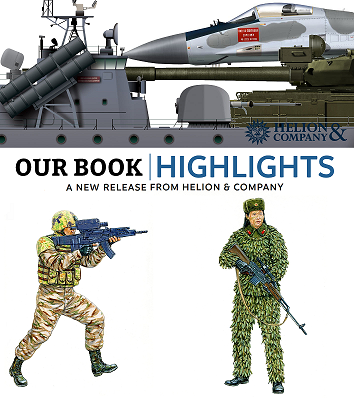By Stijn Mitzer and Joost Oliemans
Amidst the smoldering wreckages of destroyed surface-to-air missile (SAM) systems littering the battlefields of Nagorno-Karabakh there was one notable absentee that appeared to have escaped certain destruction at the hands of drones during the 2020 Nagorno-Karabakh War: The Buk-M1-2. Indeed, although it constitutes one of the most modern and capable SAM systems in the inventory of the Armenian Armed Forces, the Buk-M1-2 (NATO designation: SA-11 'Gadfly') SAM system appears to have played no role during the fierce 44-day conflict whatsoever.
Although it was initially believed that these, along with most of Armenia's newly-acquired Tor-M2KMs, were withheld until the bulk of the Armenian Army entered Nagorno-Karabakh from their bases inside Armenia, the first sighting of the Tors already early on in the conflict soon strongly suggested that the Buks would not be participating in the fighting. As one of the few SAM systems capable of reaching the altitude UAVs like the Bayrakar TB2 and Heron operate at, their absence from the battlefield was certainly felt for the entire duration of the war.
Very little is known about the Buk's service history in Armenia. In fact, hadn't it been for Armenia's 25th Independence Day parade in 2016 the acquisition of Buk-M1-2s by the country would still be completely unknown. Armenia is believed to have acquired its Buks somewhere in the early-to-mid 2010s to supplement and later replace the aging 2K11 Krug (NATO designation: SA-4) and 2K12 Kub (NATO designation: SA-6) systems still in active service in Armenia at that time. However, as with so many Armenian defence projects a lack of funds prevented the purchase of more systems, ultimately leaving Armenia with just two batteries of Buks with three launchers each.
 |
A Buk-M1-2 TELAR on parade in Yerevan in 2016. This still is the only sighting of these systems in Armenian service. |
The Armenian military quickly scrambled to bring the five inoperational Buks back to operational condition, contracting a Russian repair team to do so by October 10th. [1] As no Buk was ever sighted during the Nagorno-Karabakh War (by contrast, plenty of footage showing the operation of its Tor systems during the conflict exists) and no missile wreckage belonging to one of the Buk's 9М38(M1) missiles was ever encountered on the ground, one may conclude that the efforts of the Russian team were ultimately in vain. The fact that six of the country's most modern SAM systems and also one of the few systems that could at least have a fighting chance against Azerbaijan's fleet of TB2s spent the entire duration of the war in storage must have been a disheartening thought to all Armenian soldiers who found themselves on the receiving end of Azerbaijani's drone warfare.
The Armenian military has frequently been blamed for being caught unprepared for the type of drone warfare which was to define the Nagorno-Karabakh War. Contrary to popular opinion, this is not exactly the case, as the acquisition of modern SAM systems like the Buk and Tor, Russian Repellent-1, Avtobaza-M and Borisoglebsk-2 electronic warfare systems and electro-optical equipment acquired from various sources provided Armenia with some of the most modern Russian systems on the market. The fact that the combined force of these same systems failed to live up to expectations under combat conditions can hardly be blamed on Armenia, and is instead indicative of a widening gap between drone capabilities and those of the systems designed to counter them.
 |
Electro-optical systems like the 'Shumits' jointly-developed with South Korea pictured here ultimately failed to make an impact against drones during the 2020 Nagorno-Karbakh War. |
After decades of experience in operating and maintaining the 9K33 Osa, Armenia is meanwhile capable of overhauling and upgrading these systems by themselves. By comparison, the Buk-M1-2 was technologically more complex, expensive to maintain and acquired in limited numbers only. A continued reliance on the 9K33 was hardly a matter of choice for the Armenian military, but merely necessitated by the limited technological capabilities and finances of Armenia. Though a critical analysis of Armenia's poor performance during the brief war is justified and in fact imperative to understanding modern conflict, its attempts at remedying its problems in the face of a limited budget should not simply be dismissed as nonsensical, for they were not.
 |
Four out of the 35 9K33 Osa SAM systems acquired from Jordan in a bargain 27 million USD deal. By comparison, just two Tor SAM systems could be purchased for the same price. |
Even had the Buk-M1s been deployed during the conflict they would likely have achieved little but to slightly complicate Azerbaijani UAV operations over Nagorno-Karabakh. In fact, given their small number they would likely have quickly fallen victim to Bayraktar TB2s and loitering munitions sent out to spot and destroy them, as happened with at least one Tor system. As a matter of fact, the Buk is anything but a novel threat to the TB2, with the more modern iteration of the system known as the Buk-M2 (NATO designation: SA-17 'Grizzly') successfully combatted and evaded in Syria.
Nonetheless, as one of Armenia's most modern SAM systems (and, after the gruelling attrition of the 44-day war, also one of its most numerous), its military will be left with little choice but to invest in keeping the system operational, likely seeing use for years to come. Regardless they should serve as a powerful reminder that technologically advanced armament is not a guarantee of advanced capabilities on the battlefield; a deterrent that cannot be deployed effectively loses its value as soon as war is declared.
[1] Армения потеряла четыре из шести размещенных в Карабахе зенитных ракетных комплексов Тор-М2КМ https://diana-mihailova.livejournal.com/5844055.html
[2] Jordan to sell Osa SAMs https://web.archive.org/web/20171104074342/http://www.janes.com/article/75246/jordan-to-sell-osa-sams
[3] Armenia Shows Off New Osa-AK Air Defense Missiles https://militaryleak.com/2020/01/06/armenia-shows-off-new-osa-ak-air-defense-missiles/
Recommended Articles:






















